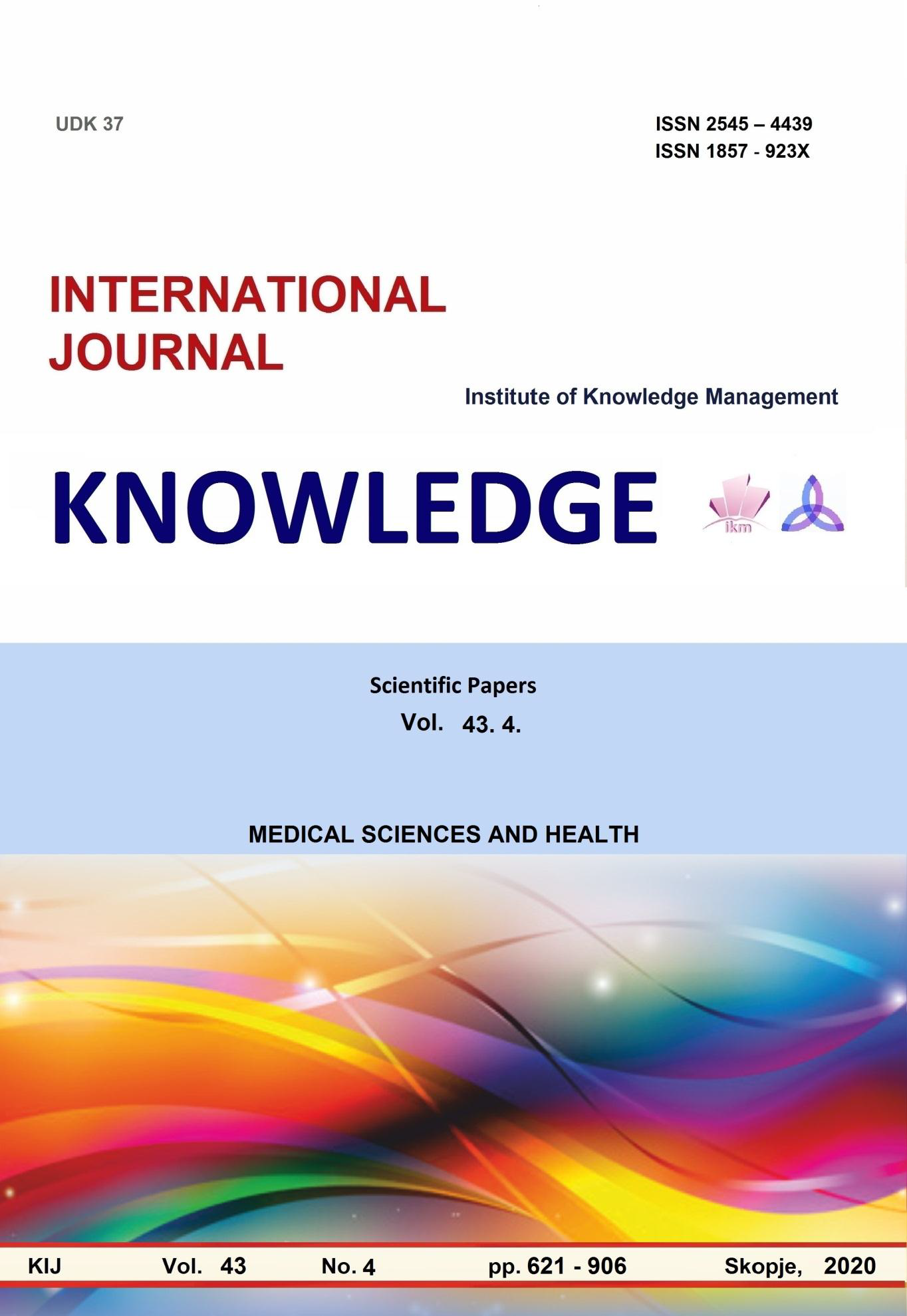PATHOLOGICAL CHANGES OF DENTAL CEMENTUM DURING PERIODONTAL DISEASE
PATHOLOGICAL CHANGES OF DENTAL CEMENTUM DURING PERIODONTAL DISEASE
Author(s): Mihajlo Petrovski, Kiro PapakocaSubject(s): Social Sciences
Published by: Scientific Institute of Management and Knowledge
Keywords: periodontal pocket; pathological changes; hard-wall of periodontal pocket; chronical peridontitis
Summary/Abstract: During chronic periodontitis, as one of the most common oral disease, on the hard wall of the periodontal pocket, which is presented by dental cementum significant pathological changes can be noted. These changes participate in maintaining the continuity of the periodontal infection, influencing, at the same time, no less on the complexity and complicate the periodontal treatment. As the pocket deepens, the collagen fibers that insert into the dental cement are mainly destroyed, causing this dental tissue to be exposed to the effects of the oral environment. On the collagen residues of Sharpes‘ fibers in cement degeneration can be present, creating an environment that favors inhabitation of bacteria, too. These bacteria can penetrate the cement to a depth as far as to the cement-dentin border. In some cases they can penetrate in the dentin tubules, that can cause pulpal inflammation, as a complication. Pathological granules (especually seen by electronic microscopy) that represent regions of collagen degeneration or regions where collagen fibers are not initially fully mineralized can often be detected on the hard wall of the periodontal pocket. The penetration and growth of bacteria leads to fragmentation and carious process of the cement surface, leading to formation of zones of necrotic cement, separated from the tooth by masses of bacteria. In addition, bacterial products, such as endotoxins, have also been detected in the dental cementum of periodontal pockets. Periodontal diseased root fragments also prevent in vitro attachment of human gingival fibroblasts. Most common changes on the hard wall of the periodontal pocket are clinically manifested by softening of the dental root surface, which is usually asymptomatic but painful when a probe or explorer enters the region. The cementum is very thin in the cervical region of the tooth, where therapeutically debridement often removes it completely, leaving exposed dentin beneath it. Regions of increased mineralization of the dental cement are result of exchange or exposure of the dental root surface on the oral cavity sourounding, especially exchange of minerals and organic components on the cement-saliva boundary surface. That is the reason why mineral content of the cement increases. On the periodontal compromised areas of the roots are increased the amount of the following minerals: calcium, magnesium, phosphorus and fluoride. The development of a highly mineralized surface layer can increase the tooth's resistance to dental caries (cervical decay). Hypermineralized zones are associated with enriched crystal structure and organic changes. Loss of or reduction of collagen near the cement surface and subsurface and condensation of organic material of exogenous origin are also reported. Regions of demineralization are usually associated with root caries. Dental cement also can soften and undergo fragmentation and cavitation. Unlike enamel caries, root surface caries tends to progress around the tooth rather than deep into the tooth. Active carious root lesions take the form of yellowish or light brown regions, often covered with plaque and having a relatively soft consistency when probed. Inactive lesions are well-defined darker lesions with a smoother surface and a firmer consistency when probing. When after periodontal therapy (both conservative and surgical) plaque levels and pocket depths increased, there is also a change in the oral bacterial environment, followed by a reduction in periodontal pathogens and an increase of Streptococcus mutans and repercussive caries development in the root.
Journal: Knowledge - International Journal
- Issue Year: 43/2020
- Issue No: 4
- Page Range: 645-648
- Page Count: 4
- Language: English

